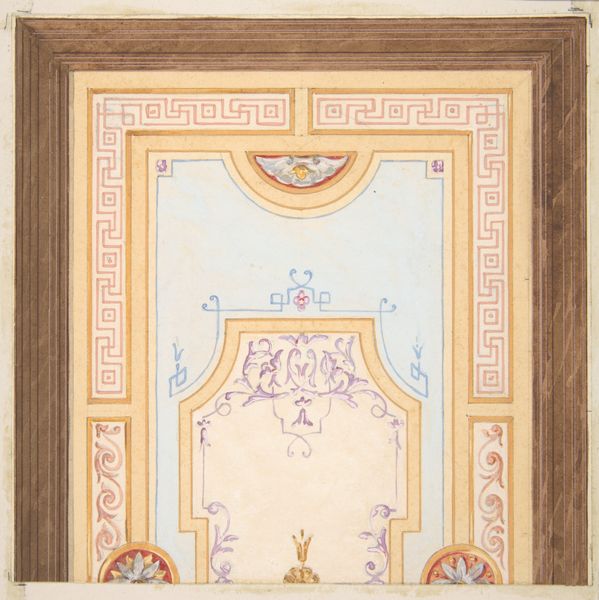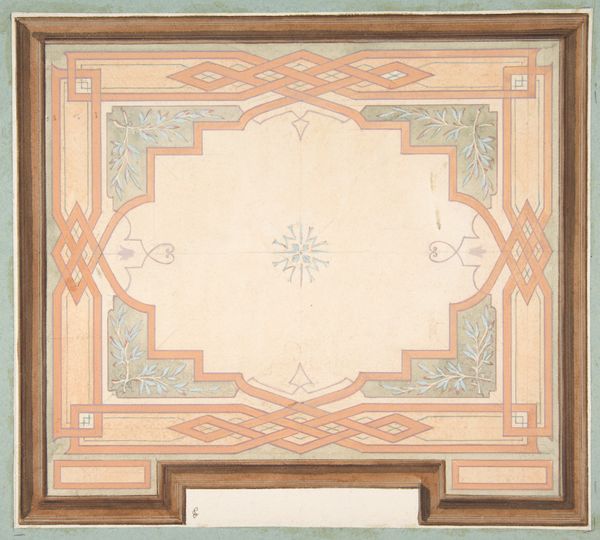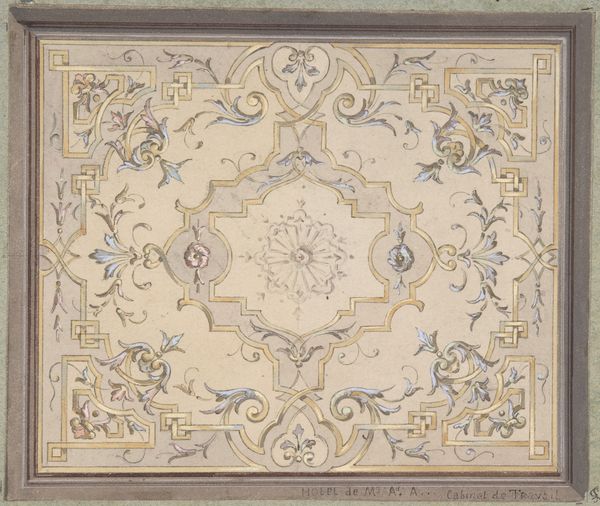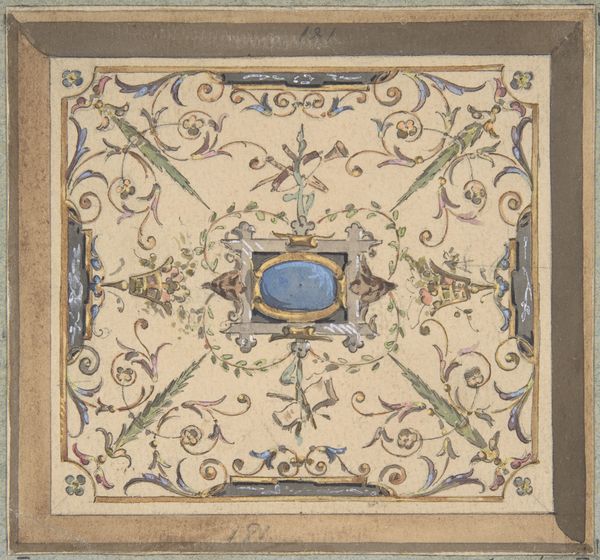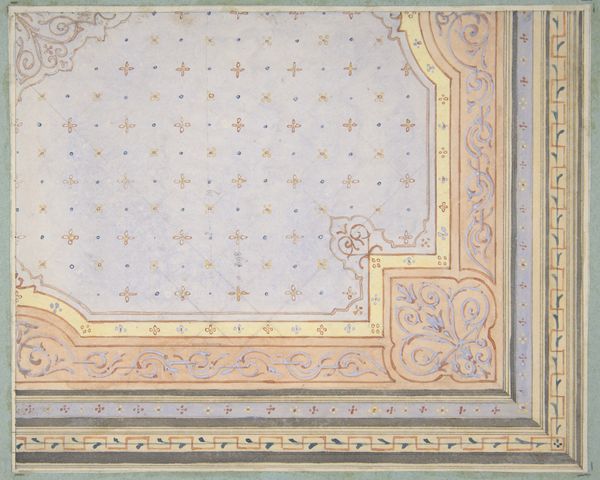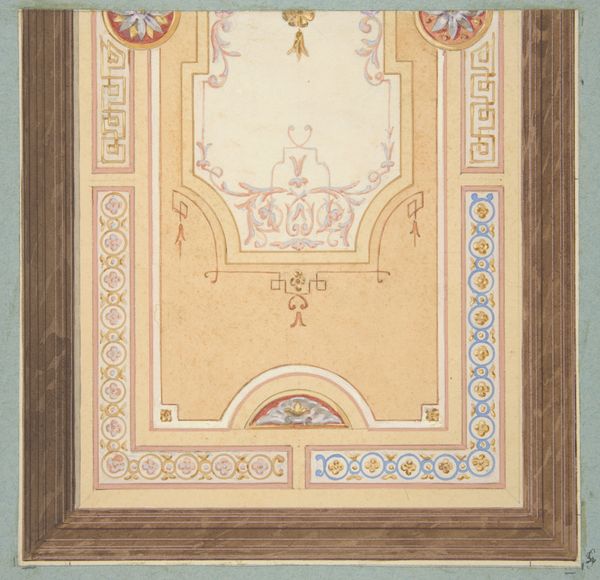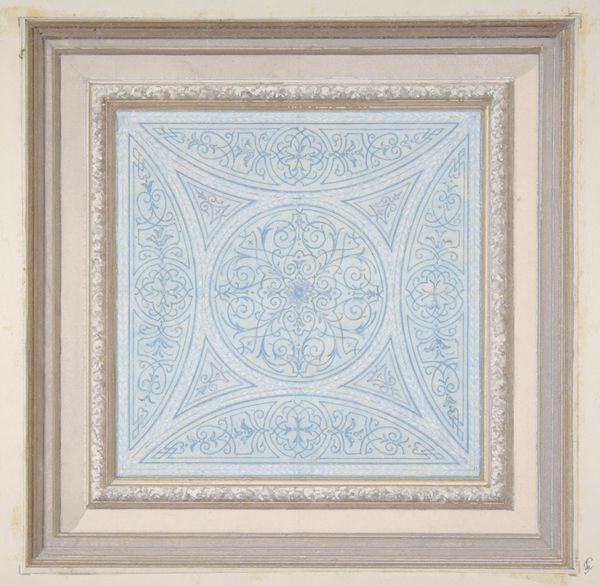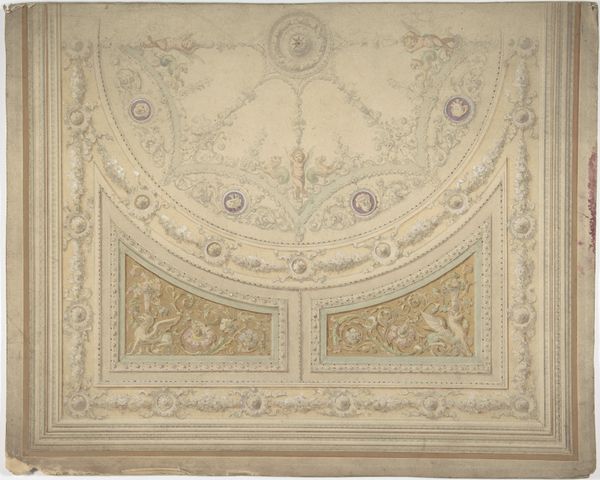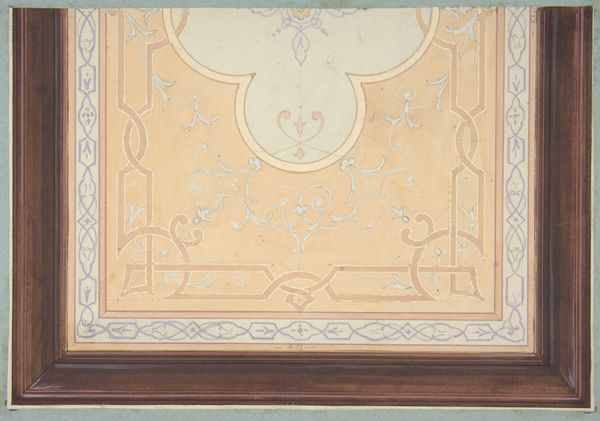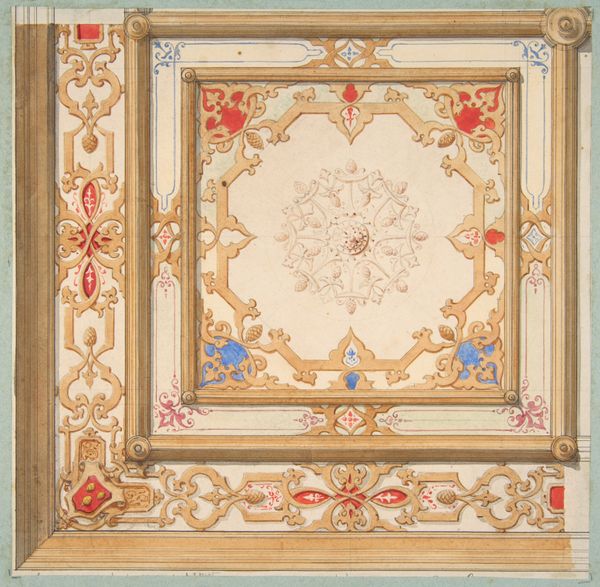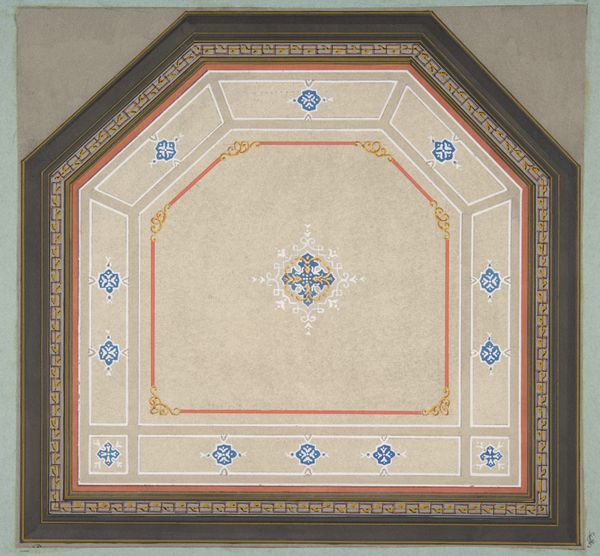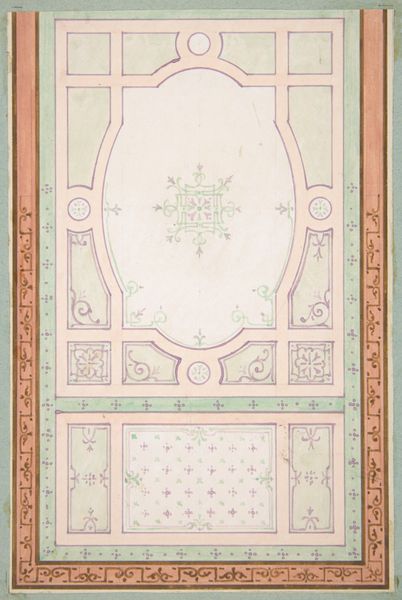
Design for the painted decoration of a ceiling 1830 - 1897
0:00
0:00
drawing, print
#
drawing
# print
#
classical-realism
#
geometric
#
decorative-art
Dimensions: Overall: 14 3/4 x 10 7/16 in. (37.5 x 26.5 cm) image: 6 1/2 x 6 9/16 in. (16.5 x 16.6 cm)
Copyright: Public Domain
Curator: Here we have "Design for the painted decoration of a ceiling" attributed to Jules-Edmond-Charles Lachaise, likely conceived between 1830 and 1897. It’s a drawing and print currently held at the Metropolitan Museum of Art. Editor: It strikes me immediately as very calming, almost meditative, in its symmetry. The pale yellow and subtle blues create a sense of restrained elegance, a peaceful counterbalance. Curator: Indeed. These designs would often find their way into grand public spaces, influencing a building’s aura for the elite. The application of classical realism with decorative art reveals the 19th-century desire to evoke luxury. This aesthetic served very real social functions in those environments. Editor: From a formalist viewpoint, I’m intrigued by the balance between the rigid geometric framework and the fluid, organic detailing. Note how Lachaise uses curving lines within that stricter structure, softening it while emphasizing symmetry, even the strategic placement of similar ornamentations around the square perimeter. Curator: Precisely. Architects would adopt these motifs to reinforce the illusion of power, subtly reminding building occupants of the order and hierarchy. Even ceiling art helped bolster this perception, extending that rhetoric upward for full aesthetic control. Editor: I wonder about the intended location. Considering that centralized floral display, it may be situated above an altar or point of religious reverence. Curator: That’s possible! Lachaise also worked in the context of increasingly secular display, with grand houses becoming showplaces. Perhaps this could serve either religious or even domestic ritual. Editor: Regardless of its location, it’s clear that form follows function here. Even on a purely aesthetic level, the interplay of color and geometric shape has left its impression. Curator: Right you are! Lachaise and artists of the time crafted beautiful visual codes with power implications for audiences receptive and aware of those signs.
Comments
No comments
Be the first to comment and join the conversation on the ultimate creative platform.
